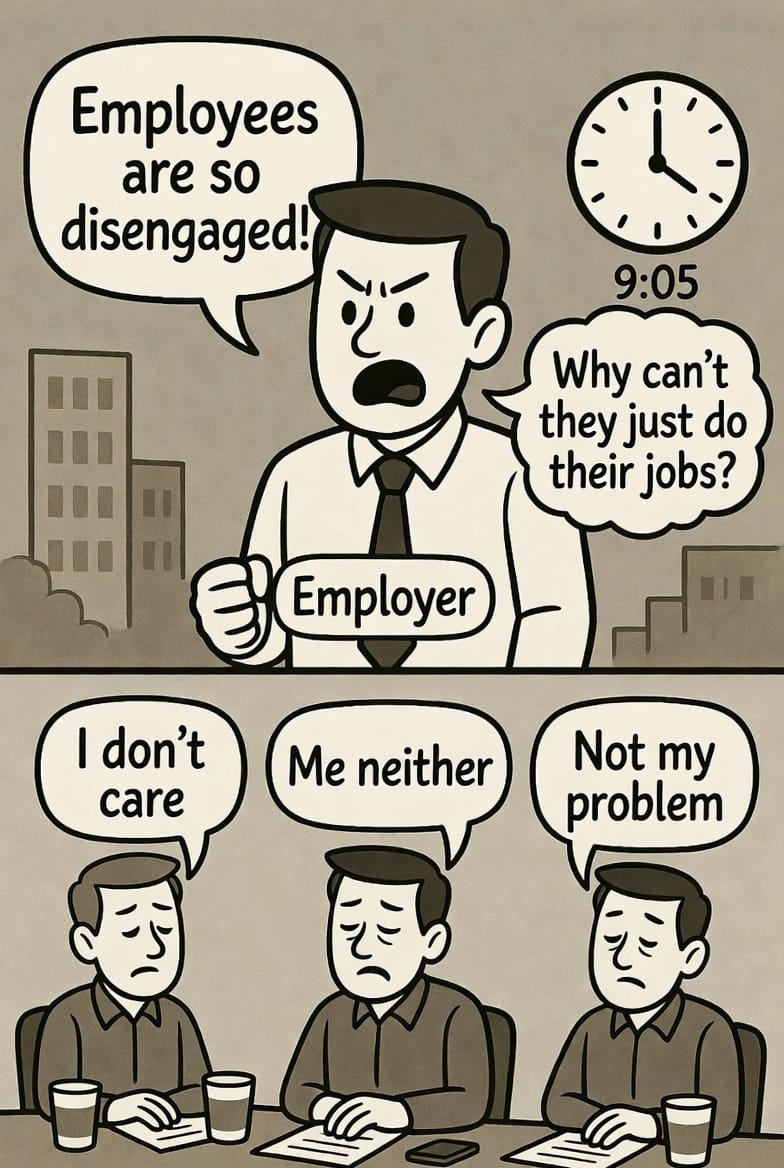Empowered Leadership
Not top-down. Not bottom-up. A new way to lead in the AI era.
The world is divided, and it is impacting your business. Employers are fighting for control in a push to increase productivity and efficiency, while employees are disengaged, often going through the motions. At best, leaders get a short burst of effort before employees burn out, move on, or retreat back into disengagement.
This divide isn’t new, but the pandemic accelerated it. Working from home gave employees a taste of freedom and balance, and many realized that work alone no longer gave them meaning. Because of this disconnect with their careers, productivity dipped, innovation stalled, and in response, employers doubled down by calling people back to the office, reviving Jack Welch–style rank-and-yank schemes, and hoping control would solve disengagement. It hasn’t.
Meanwhile, AI is reshaping the landscape. Employers see it as another lever to drive efficiency and put pressure on employees to be more productive. Employees feel this pressure, and it only increases the divide and further stagnates growth. Yet AI also exposes the need for a new approach: if technology can take care of tasks, leaders must take care of people.

So how do you create a company where employees consistently innovate, deliver beyond their job descriptions, and drive performance? With all respect to Simon Sinek and Jim Collins, it takes more than a corporate “why.” And while Gary Hamel and Brian Robertson’s structural empowerment experiments are important, they have proven too slow and unsustainable for today’s pace.
What is needed now is a new model of leadership — Empowered Leadership — one that bridges the divide by combining purpose with empowerment. Leaders must not only cast vision and lead by example, but also help employees cultivate their own sense of purpose, even when that purpose extends beyond the company’s mission. The goal is not to have employees act like robots, blindly following orders, nor to create a cult-like leader who has employees burn out in their service. Instead, it is to empower people to be great while they are with your company and, if they move on to pursue their own vision, to leave as advocates for your brand because of the way you invested in them.
This approach creates a virtuous cycle. Employees give back more because the company is giving to them. Companies that adopt Empowered Leadership do not just retain talent; they become magnets for it. That advantage compounds: better people drive more innovation and higher productivity, far beyond what traditional command-and-control leadership can achieve. As Marcus Buckingham’s research shows, when employees fall even partially in love with their work (no one will ever love your company as much as you do), productivity and creativity rise dramatically. Leaders who invest in employees’ growth, both aligned and unaligned with company goals, unlock performance today and build a reputation that attracts the very best tomorrow.
We can no longer lead top down. We can no longer lead bottom up. We must now lead through Empowered Leadership, where leaders inspire and employees are empowered to inspire themselves and others, inside and outside of work. This is the path to bridging the divide, fueling innovation, and unlocking productivity in the AI era.
